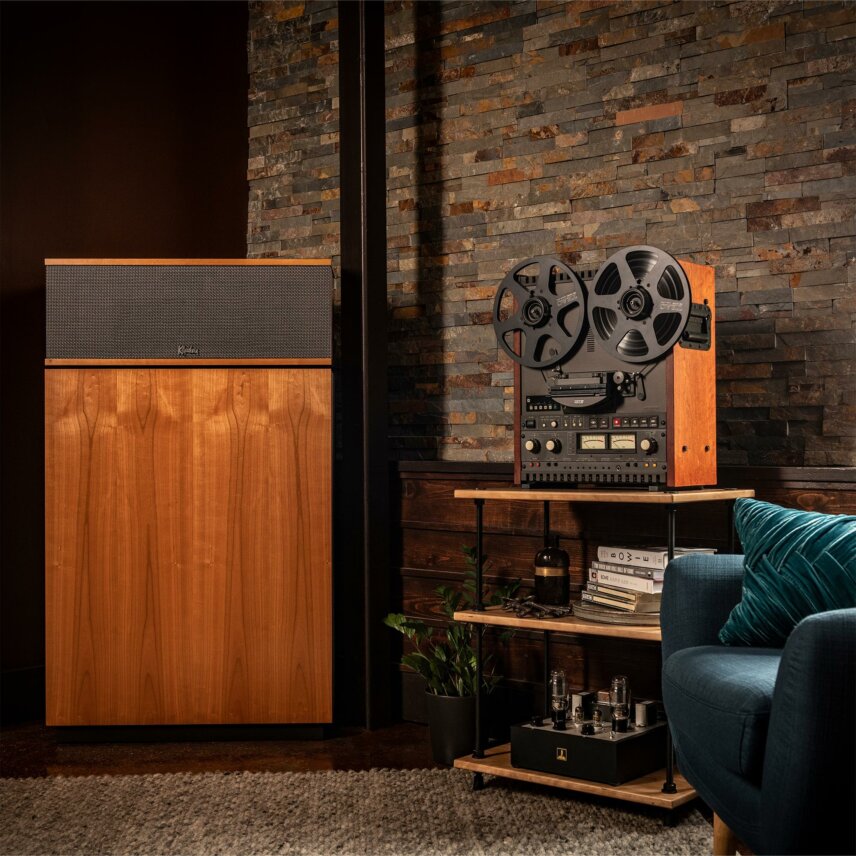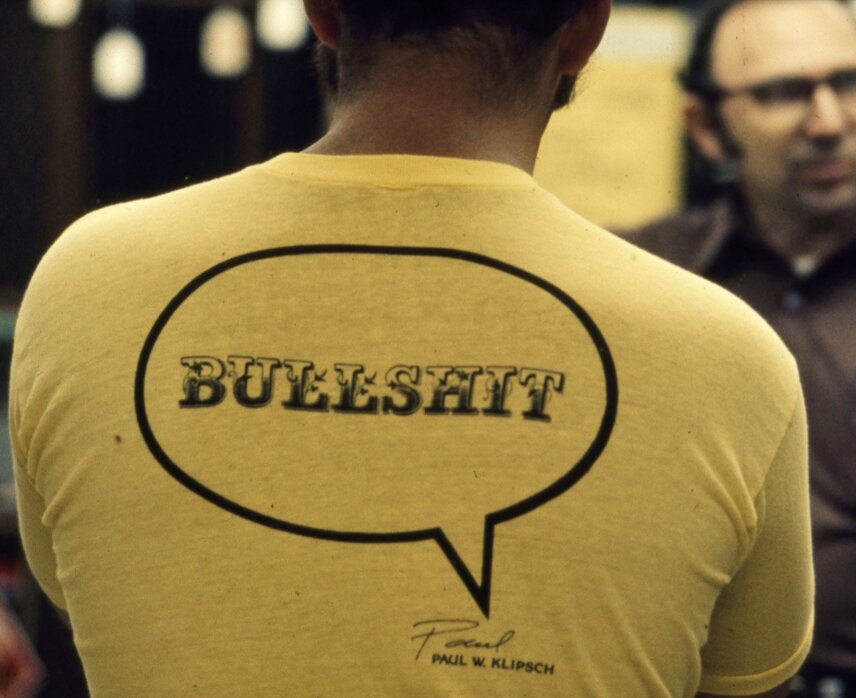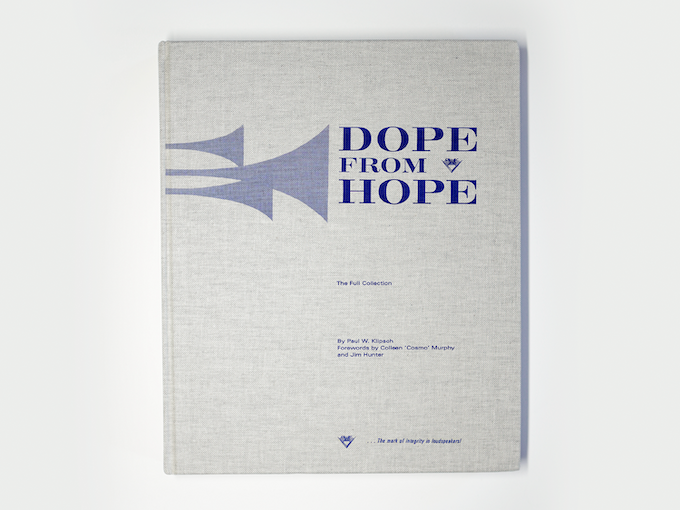CD, CD Çalar, DVD, DVD Çalar, SACD, LP, Plak Çeşitleri ve Fiyatları

The book, titled ‘Dope For Hope’, contains a collection of newsletters, draft papers, sketches, captions and indices from Hi-Fi pioneer Paul W. Klipsch.
Paul Klipsch created the first prototypes of his now famous corner horn speaker design during his service with the US Army in World War Two. Klipsch received a patent for the design, dubbed the Klipschorn, in 1945 and then founded Klipsch & Associates in 1946. He hand-built each and every loudspeaker himself until he hired his first employee in 1948.
The Klipschorn was hugely successful and is widely considered to have kickstarted the Hi-Fi movement. It also went on to become the longest consistently produced loudspeaker in history and is still being made at the company’s factory in Hope, Arkansas.

In the 1960s Klipsch first began circulating a newsletter named ‘Dope For Hope’ to dealers and customers. The publication was, “a heady mix of genius-level schematics, reasoned rants against mediocre manufacturers (see Klipsch’s tagline), and dry, self-deprecating humour,” that ultimately encouraged readers to “experiment with, enhance, learn about, and enjoy better sound at home… or on the dance floor.”

These newsletters were extremely popular among audiophiles but have been mostly lost to time other than a few low-resolution editions available online. Barbie Bertisch and Paul Raffaele are the ones about to change that.
[advert]
Barbie Bertisch and Paul Raffaele
Bertisch and Raffaele, cofounders of the fanzine and record label ‘Love Injection’, first learned of the ‘Dope For Hope’ newsletters at a memorial for David Mancuso. Mancuso, a famed DJ and founder of the high-fidelity sensory experience known as ‘The Loft’, was a big fan of Klipsch and ‘Dope For Hope.’ He not only used Klipschorns for, ‘The Loft’ but would often pour over ‘Dope For Hope’ searching for ways to improve the sound system even more.
“I kept ‘Dope from Hope’ in my drawer and read it many times. I made copies and gave them out.” – David Mancuso
After discovering, ‘Dope Through Hope’, Bertisch and Raffaele knew that they needed to share the newsletters with the world. Thus they began working with The Klipsch Museum of Audio History to create the book ‘Dope For Hope’.

Raffaele, speaking on the book, says. “We came into Klipsch through communal listening and dancing… We were just taken by the people that obsessed over the speakers and the fact that you could walk into clubs all over the world and see Klipsch speakers.”
“This book appeals to lots of people – graphic designers that want to see these beautiful mid-century designs (for example). It’s a coffee-table book that teaches you about audio in a non-academic way. For Klipsch lovers, it’s a really beautiful piece of history.”
‘Dope For Hope’ is a passion project for Bertisch and Raffaele and as such, they have started a Kickstarter to fund the project.
If you would like to help fund the production and publication of ‘Dope For Hope’ visit the Kickstarter page.
[product-collection id=”123922″]
Follow Attack Magazine
[social-links facebook=“https://www.facebook.com/attackmag” twitter=“https://twitter.com/attackmag1” instagram=“https://www.instagram.com/attackmag/” youtube=“https://www.youtube.com/user/attackmag” soundcloud=“https://soundcloud.com/attackmag” tiktok=“https://www.tiktok.com/@attackmagazine”]
attackmagazine

The book, titled ‘Dope For Hope’, contains a collection of newsletters, draft papers, sketches, captions and indices from Hi-Fi pioneer Paul W. Klipsch.
Paul Klipsch created the first prototypes of his now famous corner horn speaker design during his service with the US Army in World War Two. Klipsch received a patent for the design, dubbed the Klipschorn, in 1945 and then founded Klipsch & Associates in 1946. He hand-built each and every loudspeaker himself until he hired his first employee in 1948.
The Klipschorn was hugely successful and is widely considered to have kickstarted the Hi-Fi movement. It also went on to become the longest consistently produced loudspeaker in history and is still being made at the company’s factory in Hope, Arkansas.

In the 1960s Klipsch first began circulating a newsletter named ‘Dope For Hope’ to dealers and customers. The publication was, “a heady mix of genius-level schematics, reasoned rants against mediocre manufacturers (see Klipsch’s tagline), and dry, self-deprecating humour,” that ultimately encouraged readers to “experiment with, enhance, learn about, and enjoy better sound at home… or on the dance floor.”

These newsletters were extremely popular among audiophiles but have been mostly lost to time other than a few low-resolution editions available online. Barbie Bertisch and Paul Raffaele are the ones about to change that.
[advert]
Barbie Bertisch and Paul Raffaele
Bertisch and Raffaele, cofounders of the fanzine and record label ‘Love Injection’, first learned of the ‘Dope For Hope’ newsletters at a memorial for David Mancuso. Mancuso, a famed DJ and founder of the high-fidelity sensory experience known as ‘The Loft’, was a big fan of Klipsch and ‘Dope For Hope.’ He not only used Klipschorns for, ‘The Loft’ but would often pour over ‘Dope For Hope’ searching for ways to improve the sound system even more.
“I kept ‘Dope from Hope’ in my drawer and read it many times. I made copies and gave them out.” – David Mancuso
After discovering, ‘Dope Through Hope’, Bertisch and Raffaele knew that they needed to share the newsletters with the world. Thus they began working with The Klipsch Museum of Audio History to create the book ‘Dope For Hope’.

Raffaele, speaking on the book, says. “We came into Klipsch through communal listening and dancing… We were just taken by the people that obsessed over the speakers and the fact that you could walk into clubs all over the world and see Klipsch speakers.”
“This book appeals to lots of people – graphic designers that want to see these beautiful mid-century designs (for example). It’s a coffee-table book that teaches you about audio in a non-academic way. For Klipsch lovers, it’s a really beautiful piece of history.”
‘Dope For Hope’ is a passion project for Bertisch and Raffaele and as such, they have started a Kickstarter to fund the project.
If you would like to help fund the production and publication of ‘Dope For Hope’ visit the Kickstarter page.
[product-collection id=”123922″]
Follow Attack Magazine
[social-links facebook=“https://www.facebook.com/attackmag” twitter=“https://twitter.com/attackmag1” instagram=“https://www.instagram.com/attackmag/” youtube=“https://www.youtube.com/user/attackmag” soundcloud=“https://soundcloud.com/attackmag” tiktok=“https://www.tiktok.com/@attackmagazine”]